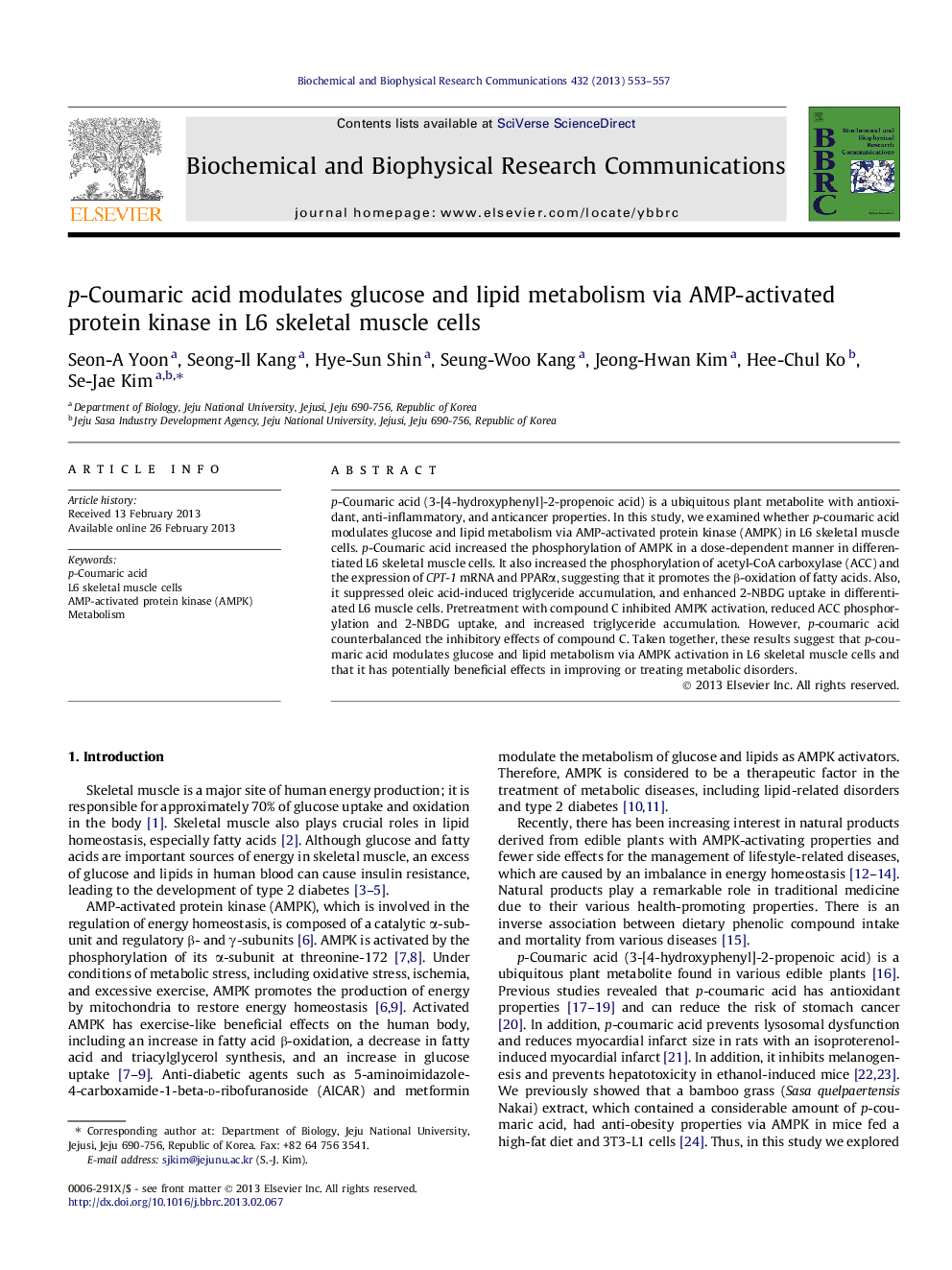| Article ID | Journal | Published Year | Pages | File Type |
|---|---|---|---|---|
| 1928811 | Biochemical and Biophysical Research Communications | 2013 | 5 Pages |
p-Coumaric acid (3-[4-hydroxyphenyl]-2-propenoic acid) is a ubiquitous plant metabolite with antioxidant, anti-inflammatory, and anticancer properties. In this study, we examined whether p-coumaric acid modulates glucose and lipid metabolism via AMP-activated protein kinase (AMPK) in L6 skeletal muscle cells. p-Coumaric acid increased the phosphorylation of AMPK in a dose-dependent manner in differentiated L6 skeletal muscle cells. It also increased the phosphorylation of acetyl-CoA carboxylase (ACC) and the expression of CPT-1 mRNA and PPARα, suggesting that it promotes the β-oxidation of fatty acids. Also, it suppressed oleic acid-induced triglyceride accumulation, and enhanced 2-NBDG uptake in differentiated L6 muscle cells. Pretreatment with compound C inhibited AMPK activation, reduced ACC phosphorylation and 2-NBDG uptake, and increased triglyceride accumulation. However, p-coumaric acid counterbalanced the inhibitory effects of compound C. Taken together, these results suggest that p-coumaric acid modulates glucose and lipid metabolism via AMPK activation in L6 skeletal muscle cells and that it has potentially beneficial effects in improving or treating metabolic disorders.
► p-Coumaric acid, a ubiquitous plant metabolite, activates AMPK in L6 skeletal muscle cells. ► It promotes fatty acid β-oxidation, suppresses oleic acid-induced triglyceride accumulation and enhances 2-NBDG uptake. ► It counterbalances the inhibitory effects of compound C via its role as an AMPK activator. ► p-Coumaric acid may have potential effects on modulating glucose and lipid metabolism.
